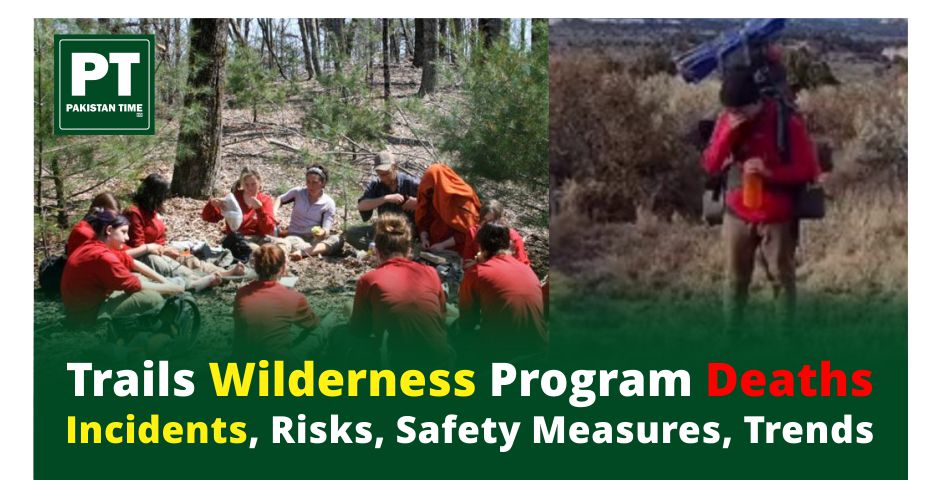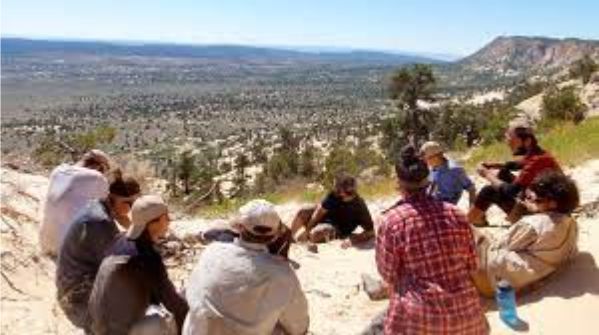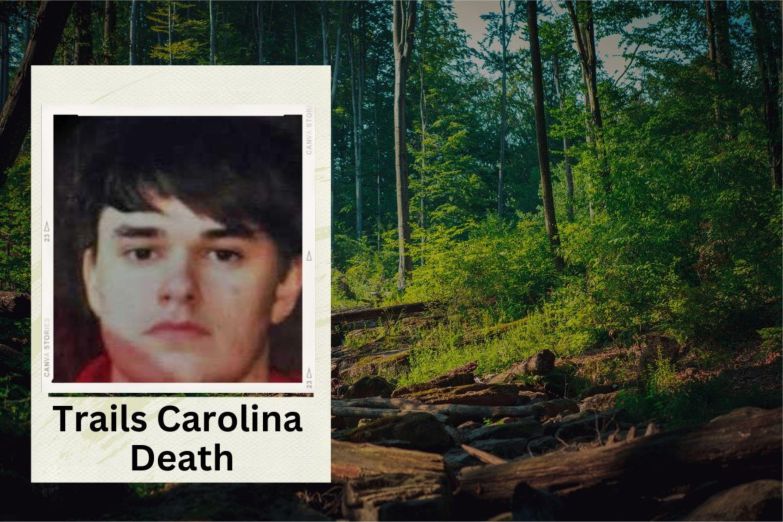Trails Wilderness Program Death: Incidents, Risks, Safety Measures, Future Trends
Introduction
Trails Wilderness Program has gained popularity as an alternative form of therapy for individuals facing various challenges such as addiction, behavioral issues, and mental health disorders. It involves immersive experiences in nature, where participants engage in outdoor activities and therapeutic interventions aimed at promoting personal growth and healing. However, recent incidents of deaths in wilderness therapy programs, including the Trails Wilderness Program, have raised concerns about the safety and efficacy of these programs.
What is Trails Wilderness Program?
Trails Wilderness Program is a renowned wilderness therapy program known for its innovative approach to helping individuals overcome challenges. Founded on the principles of adventure-based therapy, Trails Wilderness Program offers a holistic experience that combines outdoor activities with therapeutic interventions. The program designed to provide participants with opportunities for self-reflection, personal growth, and skill development in a supportive wilderness environment.
Understanding Trails Wilderness Program
Wilderness therapy is rooted in the belief that immersion in nature can have profound therapeutic effects on individuals. By engaging in outdoor activities such as hiking, camping, and rock climbing, participants are encouraged to confront their challenges and develop coping strategies in a natural setting. The wilderness environment serves as a catalyst for personal growth, allowing participants to gain insights into their behavior and emotions while learning valuable life skills.
Recent Trails Wilderness Program Death and Similar Incidents
Despite its potential benefits, wilderness therapy is not without risks. Recent incidents of trails wilderness program death have highlighted the importance of addressing safety concerns. Factors contributing to these tragic events may include environmental hazards, medical emergencies, inadequate supervision, and unforeseen accidents. These incidents have prompted a closer examination of safety protocols and risk management strategies within the wilderness therapy industry.
Here are five incidents of trails wilderness program deaths:
- Aspiro Wilderness Adventure Therapy:
In 2018, a 16-year-old boy died while participating in a wilderness therapy program offered by Aspiro Adventure. The cause of death reported as a medical emergency during the outdoor expedition. - Second Nature Blue Ridge:
In 2016, a 14-year-old boy died while attending a wilderness therapy program at Second Nature Blue Ridge. The cause of death attributed to a medical condition that became critical during the program. - Catherine Freer Wilderness Therapy Expeditions:
In 2009, a 16-year-old girl died in a wilderness therapy program conducted by Catherine Freer Wilderness Therapy Expeditions. The cause of death reported as dehydration and heatstroke during a hiking trip. - SUWS of the Carolinas:
In 2019, a 17-year-old boy died while participating in a wilderness therapy program at SUWS of the Carolinas. The cause of death attributed to a medical emergency that occurred during the program. - Aspen Achievement Academy:
In 1990, a 16-year-old girl died while enrolled in a wilderness therapy program at Aspen Achievement Academy. The cause of death reported as hypothermia due to exposure during a camping trip.
These incidents highlight the importance of ensuring participant safety and implementing thorough risk management protocols in wilderness therapy programs.
Safety Measures in Trails Wilderness Programs
To mitigate the risks associated with wilderness therapy, programs like Trails Wilderness Program must prioritize participant safety. This involves implementing thorough risk assessments before each expedition, ensuring that staff members are well train in wilderness first aid and emergency response, and maintaining open lines of communication with participants and their families. Additionally, programs must adhere to industry standards and regulations governing wilderness therapy to uphold the highest safety standards.

Legal and Ethical Considerations
In light of recent incidents, there is increased scrutiny on the legal and ethical responsibilities of wilderness therapy programs. Providers are expect to comply with state and federal regulations regarding participant safety and program operations. Additionally, ethical considerations such as informed consent, participant autonomy, and confidentiality must be upheld to ensure the well-being of participants and the integrity of the therapeutic process.
Ensuring the Safety of Participants
Ensuring the safety of participants in wilderness therapy programs requires a multi-faceted approach. This includes thorough participant screening to assess their physical and mental health, continuous monitoring and supervision during outdoor activities, and the development of emergency response plans tailored to the unique challenges of the wilderness environment. Programs must also prioritize staff training and ongoing professional development to ensure that they are equipped to handle any situation that may arise.
Addressing Public Concerns
Public perception of wilderness therapy has been influenced by recent incidents, leading to increased scrutiny and concerns about the safety of these programs. To address these concerns, wilderness therapy providers must be transparent in their operations and communications. This includes providing accurate information about the risks and benefits of wilderness therapy, as well as actively engaging with the public and stakeholders to address any misconceptions or concerns.
The Role of Therapeutic Interventions
In wilderness therapy programs, therapeutic interventions play a crucial role in facilitating personal growth and healing. These interventions may include individual and group therapy sessions, experiential learning activities, and mindfulness practices. By integrating these interventions into the wilderness experience, participants can gain valuable insights into their thoughts and behaviors while developing practical skills to navigate life’s challenges.
Evaluating Program Effectiveness
Measuring the effectiveness of wilderness therapy programs is essential for ensuring that they are meeting the needs of participants and delivering meaningful outcomes. This involves tracking participants’ progress throughout the program, collecting feedback from participants and their families, and conducting follow-up assessments to gauge the long-term impact of the program. By evaluating program effectiveness, providers can continuously improve their services and demonstrate their value to stakeholders.
Future Trends in Trails Wilderness Program
As the field of trails wilderness program continues to evolve, several trends are shaping its future. These include the integration of technology into wilderness programs, such as using digital tools for remote monitoring and communication, as well as a growing emphasis on cultural competency and diversity to ensure that programs are accessible and inclusive to individuals from all backgrounds. Additionally, there is a greater focus on research and evidence-based practices to further validate the efficacy of wilderness therapy as a therapeutic intervention.
Conclusion
While trails wilderness program can be a transformative experience for many individuals, recent deaths in wilderness programs have underscored the need for enhanced safety measures and oversight. By prioritizing participant safety, adhering to regulations, and maintaining open communication with the public, wilderness therapy programs can continue to provide valuable therapeutic experiences while minimizing the risks associated with outdoor activities.
The tragic loss of life at the Trails Wilderness Program stands as a poignant reminder of how delicate and precious life is, especially when it involves vulnerable young individuals. It serves as an urgent call to action for the entire wilderness therapy industry to fortify its safety protocols, enhance its oversight mechanisms, and ensure that the pursuit of healing and growth never compromises the well-being of its participants. This sobering event should prompt families considering such programs to approach their decisions with heightened vigilance, conducting thorough research and seeking a comprehensive understanding of the potential risks and rewards involved.
Moving forward, it is crucial that the wilderness therapy industry embraces this tragedy as a catalyst for positive change. This pivotal moment must spur a collective commitment to implementing more robust safety measures and refining therapeutic practices to mitigate risks without diminishing the transformative power of nature-based interventions. Ultimately, the hope is that this dark chapter serves as a catalyst for the evolution of safer, more effective, and ethically sound therapeutic interventions that can truly make a positive impact on the lives of those in need.
FAQs on Trails Wilderness Program Death:
What is wilderness program?
Wilderness therapy is a form of adventure-based therapy that uses outdoor activities and challenges to promote personal growth and emotional healing. It is often use to help individuals overcome behavioral issues, addiction, and mental health disorders.
What are the benefits of wilderness therapy?
Wilderness therapy offers a unique opportunity for individuals to connect with nature while addressing personal challenges. It can help improve self-esteem, develop coping skills, and foster a sense of community among participants.
What are the risks associated with trails wilderness program?
The risks of wilderness therapy include environmental hazards, physical injuries, and psychological challenges. Participants may also face difficulties adjusting to the outdoor environment and the demands of the program.
How can wilderness programs ensure participant safety?
Wilderness programs can ensure participant safety by conducting thorough risk assessments, providing adequate training for staff, and implementing strict safety protocols. Regular monitoring and communication with participants are also essential for identifying and addressing potential risks.
What should families consider before enrolling a loved one in a wilderness program?
Families should carefully research wilderness programs and consider factors such as the program’s safety record, staff qualifications, and the specific needs of their loved one. Open communication with the program staff and a clear understanding of the program’s goals and methods are also crucial for making an informed decision.
What qualifications should staff members have in a wilderness therapy program?
Staff members in wilderness therapy programs should have relevant qualifications and experience in areas such as outdoor leadership, counseling, first aid, and wilderness survival. Additionally, they should receive specialized training in wilderness therapy techniques and safety protocols.
How emergencies are handle in wilderness therapy programs?
Wilderness therapy programs should have clear protocols in place for handling emergencies. This includes procedures for responding to medical emergencies, evacuating participants from remote locations, and communicating with emergency services.
What happens after completing a wilderness therapy program?
After completing a wilderness therapy program, participants may transition to aftercare programs or follow-up therapy to continue their progress. It is important for participants to have a support system in place to maintain the skills and insights gained during the program.
How can families support a loved one participating in wilderness therapy?
Families can support their loved ones in wilderness therapy by maintaining open communication, being understanding of the challenges they may face, and actively participating in the therapeutic process as appropriate. It is also important for families to follow any recommendations or aftercare plans provided by the program.










